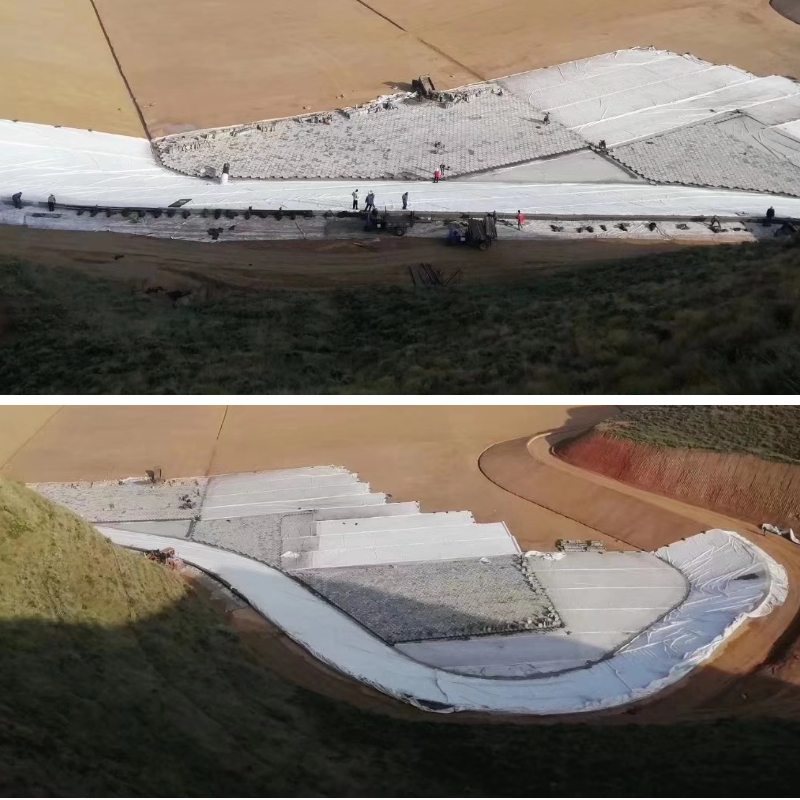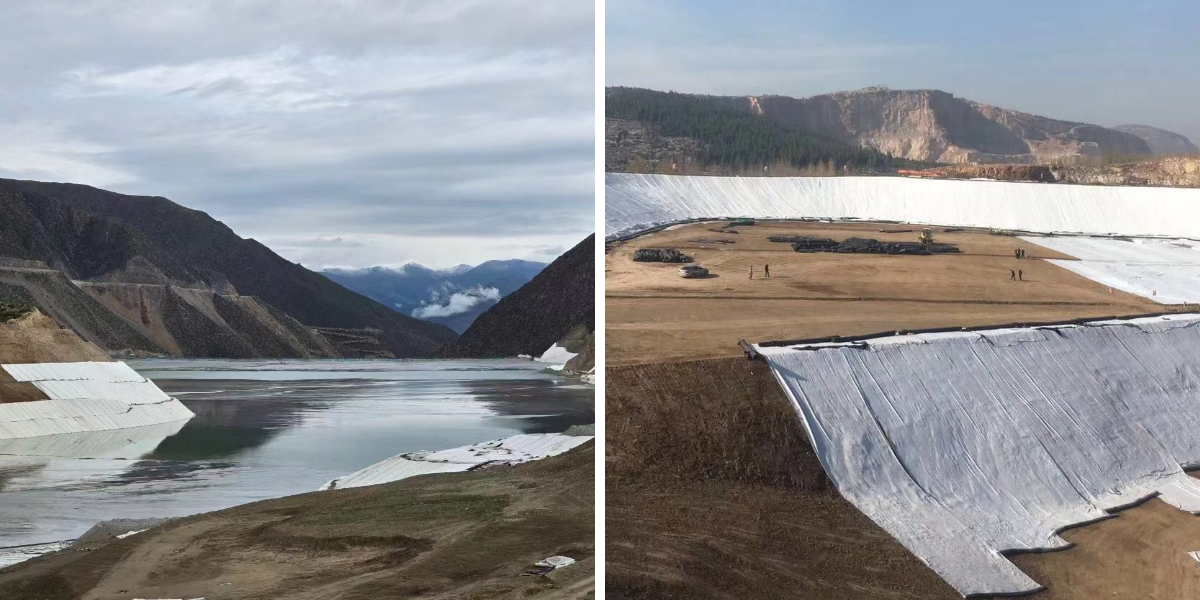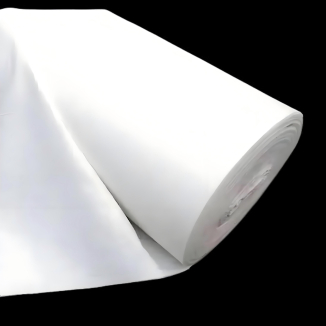Benefits of Non Woven Geotextile Fabric for Drainage Systems in Construction
1. Superior Water Flow Capacity: Enhancing Drainage Efficiency
One of the essential benefits of non woven geotextile material in drainage structures is its magnificent water float capacity. Unlike dense or tightly woven substances that hinder water movement, nonwoven drainage fabric points a 3-dimensional community of polypropylene or polyester fibers with interconnected voids. This porous structure—typically with a porosity of 70-90% and a imply drift pore dimension of 50-300 microns—allows water to bypass thru freely whilst preserving structural integrity even beneath heavy loads.
In quintessential development functions like avenue subgrades, keeping walls, or basement foundations, geotextile drainage fabric acts as a high-performance aspect in drainage assemblies. Its permeability rating, ranging from 10⁻³ to 10⁻¹ m/s, some distance exceeds that of compacted soil (10⁻⁶ to 10⁻⁸ m/s) and even gravel layers (10⁻⁴ to 10⁻³ m/s), enabling it to cope with surprising surges of water in the course of heavy rainfall or flooding. A case learn about in a industrial high-rise assignment in a flood-prone city vicinity tested this impact: putting in 300g/m² nonwoven drainage fabric round the basis perimeter, paired with a 10cm gravel layer, decreased water pooling by means of 70% in contrast to ordinary gravel-only systems. During a record-breaking storm with 150mm of rainfall in 24 hours, the bolstered machine drained 1,200 liters per rectangular meter inside three hours, stopping hydrostatic stress buildup towards the basis partitions that had brought about cracks in comparable unprotected constructions nearby.
2. Effective Soil Particle Retention: Preventing Drainage Clogging
Maintaining unobstructed water waft over time is essential for drainage device longevity, and non woven geotextile cloth excels at this balancing act. The fabric’s engineered structure—with unique opening sizes (typically 50-200 microns) calibrated the usage of ASTM D4751 standards—acts as a selective filter: water passes via freely whilst trapping soil particles, sand, and particles that would in any other case clog drainage channels or combination layers.
Geotextile producers tailor these opening sizes to healthy particular soil kinds thru rigorous gradient ratio testing. For sandy soils with particle sizes of 0.05-2mm, fabric with 100-150 micron openings preserve nice sand grains that ought to migrate into drainage aggregates and structure impermeable layers. In clayey soils, fabric with 50-80 micron openings stop colloidal clay particles (less than 0.002mm) from dispersing and blocking off go with the flow paths via chemical attraction. This focused filtration was once validated in a 10km motorway drainage project: sections strengthened with 400g/m² geotextile drainage fabric confirmed no measurable float discount after 5 years, keeping a regular discharge fee of 25 liters per minute per meter of channel. Adjacent areas barring the material skilled a 40% limit in drainage potential due to sediment buildup, requiring quarterly cleansing that disrupted site visitors and delivered $8,000 per km in annual upkeep costs.
3. Durable and Resistant: Withstanding Harsh Conditions
Construction environments concern drainage substances to severe stress, however non woven geotextile cloth is engineered to endure. Made from high-tenacity polypropylene or polyester fibers (with tensile strengths of 10-30 kN/m and elongation at wreck of 20-50%), nonwoven drainage fabric resists tearing and puncturing, even when subjected to heavy building tools or abrasive soil particles at some stage in installation. Its CBR puncture resistance exceeds 3.5 kN, making sure it survives contact with sharp rocks and metal reinforcement.
The fabric’s chemical and organic resistance in addition extends its lifespan. Unlike natural substances like jute that rot inside 1-2 years, geotextile stays steady in pH stages from three to 11, making it appropriate for acidic mine drainage areas (pH 3-5) or alkaline industrial websites (pH 9-11). Its UV stabilization additives, usually carbon black or hindered amine mild stabilizers, stop degradation from daylight exposure, protecting 80% of tensile power after 5,000 hours of accelerated weathering testing. A landfill drainage undertaking showcased this durability: after 10 years of publicity to landfill leachate containing excessive tiers of acids (pH 4.2), heavy metals (120 mg/L lead), and natural compounds, geotextile drainage fabric retained 90% of its unique energy and permeability, in contrast to 40% retention in woven polypropylene fabric used in manipulate sections.
4. Easy Installation and Cost-Effectiveness
Non woven geotextile cloth provides giant blessings in set up effectivity and long-term value savings. Compared to typical drainage substances like concrete culverts or graded gravel layers, nonwoven drainage fabric is light-weight (typically 100-600 g/m²) and convenient to handle, lowering labor necessities by means of 30-50% in most projects. It comes in massive rolls (4-6 meters large and 50-100 meters long), permitting a two-person crew to installation up to five hundred m² per day—three instances the fee of gravel filter layer installation.
The fabric additionally reduces universal challenge charges via fabric optimization. By changing thick gravel filter layers (often 150-300mm) with a skinny material layer (1-3mm), geotextile cuts combination utilization significantly. In a 50-home residential subdivision project, the usage of 200g/m² geotextile drainage fabric decreased gravel necessities by means of 300 tons, decreasing fabric prices via 20% upfront. Over the project’s lifetime, decreased renovation needs—like fewer cleanouts and repairs—added any other 15% in savings. The toll road venture cited in the past saved $120,000 in renovation expenses over 5 years by means of the usage of the fabric, with extra financial savings from decreased site visitors disruptions at some point of upkeep windows. For small initiatives like residential French drains, house owners file 40% decrease set up prices and 60% fewer clogs when the usage of nonwoven drainage fabric as an alternative of normal stone-only systems.
In conclusion, non woven geotextile cloth transforms building drainage structures via choicest water flow, focused filtration, rugged durability, and value efficiency. Whether defending constructing foundations from hydrostatic pressure, preserving motorway drainage capacity, or making sure landfill leachate control, nonwoven drainage fabric and geotextile drainage fabric supply dependable overall performance that enhances undertaking toughness and reduces lifecycle costs. By incorporating this versatile geotextile material, building authorities make sure drainage structures that stand up to the needs of each time and environment, supplying sustainable options for present day development challenges.
Contact Us
Company Name: Shandong Chuangwei New Materials Co., LTD
Contact Person :Jaden Sylvan
Contact Number :+86 19305485668
WhatsApp:+86 19305485668
Enterprise Email: cggeosynthetics@gmail.com
Enterprise Address: Entrepreneurship Park, Dayue District, Tai 'an City,
Shandong Province









